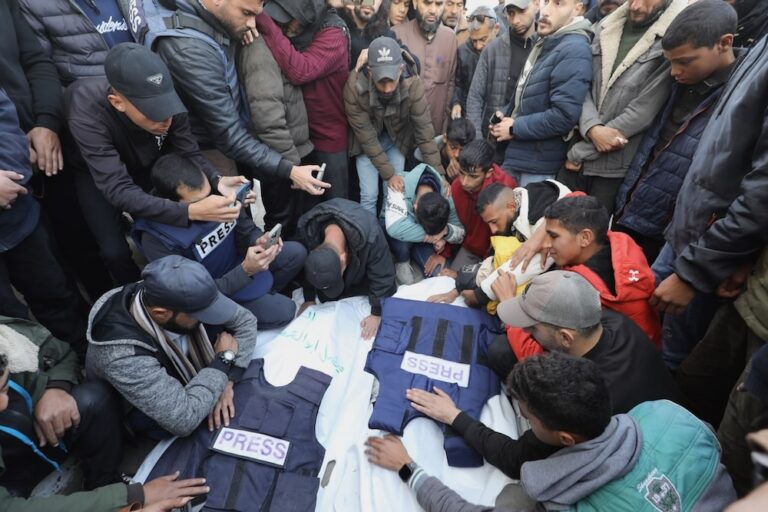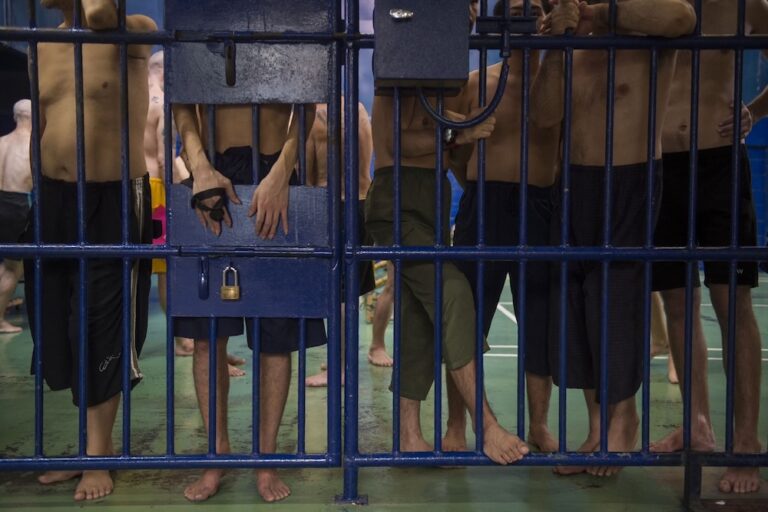According to the report, for the first time in eight years, global media freedom did not experience an overall decline, while the Middle East and North Africa saw dramatic if precarious gains in press freedom in 2011.
(Freedom House/IFEX) – May 1, 2012 – The Middle East and North Africa saw dramatic if precarious gains in press freedom in 2011, and for the first time in eight years, global media freedom did not experience an overall decline, according to a Freedom House report released today. However, due to downgrades in some previously free countries, the percentage of the world’s population living in societies with a fully free press has fallen to its lowest level in over a decade.
The report, Freedom of the Press 2012: Breakthroughs and Pushback in the Middle East, found that three countries – Egypt, Libya, and Tunisia – experienced significant improvements as a result of the Arab Spring. Dramatic gains in press freedom in Tunisia and Libya in particular marked major breakthroughs for countries long governed by autocratic rulers. Outside the Middle East and North Africa region, positive improvements were seen in countries including Burma, Indonesia, Niger, the Philippines, Thailand, and Zambia.
At the same time, independent media continued to face challenges in a number of environments:
* Regimes in other countries in the Middle East, such as Bahrain and Syria, carried out harsh crackdowns on the media as they struggled to contain their own Arab Spring protest movements.
* Several important authoritarian states-China, Russia, Iran, and Venezuela-used a variety of techniques to maintain a tight grip on the press, including detaining and jailing critics, closing down media outlets, and bringing legal cases against journalists.
* Following threats to media freedom in a number of well-established democracies in recent years, declines in Chile and Hungary resulted in status downgrades from Free to Partly Free.
* Substantial deterioration was also noted in the Partly Free media environments of Ecuador, Macedonia, Malawi, Uganda, and Ukraine.
Of the 197 countries and territories assessed during 2011, a total of 66 (33.5 percent) were rated Free, 72 (36.5 percent) were rated Partly Free, and 59 (30 percent) were rated Not Free. The analysis found that only 14.5 percent of the world’s inhabitants lived in countries with a Free press, while 45 percent had a Partly Free press and 40.5 percent lived in Not Free environments.
“The newly opened media environments in countries like Tunisia and Libya, while still tenuous and far from perfect, are critical for the future of democratic development in the region and must be nurtured and protected,” said David J. Kramer, president of Freedom House. “Also of great concern are those countries, both in the Middle East and around the world, where authoritarian regimes are now on the defensive, creating an even more perilous situation for journalists.”
The report noted several trends driving the ongoing threats to media freedom in 2011:
* Authoritarian regimes around the world, fearing domestic unrest, censored news of the Arab uprisings. In China and a number of countries in Africa and the Middle East, governments employed techniques ranging from information blackouts in the state media to sophisticated internet and text-message filtering. In nations where antigovernment protests did take hold, such as Uganda, Angola, and Djibouti, the authorities cracked down, sometimes violently, on journalists covering the demonstrations.
* State control of domestic broadcast media remains the norm in many societies, despite a growth in cable and satellite channels, and is a key method of restricting critical content. Russia, Venezuela, Zimbabwe, China, and Vietnam have all retained or extended their control of television news.
* Varied challenges continue to affect free media in a number of democratic countries, including India, Israel, Italy, South Africa, and South Korea. In 2011, heightened harassment of journalists contributed to a decline in Chile’s status from Free to Partly Free, while Hungary was also downgraded to Partly Free due to efforts by the government to seize control over the legal and regulatory framework for media.
* Chile’s decline to Partly Free and major setbacks in Ecuador are the latest in a series of negative developments in Latin America over the past decade. Whether due to violence by criminal groups, as in Mexico and Honduras, or government hostility to media criticism, as in Venezuela, Argentina, and Bolivia, media freedom is under threat in much of the region.
“Over the past several years, we have seen a disturbing decline in press freedom in established democracies, including this year’s downgrades of Hungary and Chile. Threats to media freedom often have a direct correlation with the country’s overall democratic performance,” said Karin Karlekar, project director of Freedom of the Press. “As a case in point, Hungary’s press freedom score decline comes on the heels of a similar deterioration in its ratings for political rights and civil liberties.”
Key Regional Findings:
The Americas: The region experienced a worsening of press freedom in 2011. There were two negative status changes, with Chile and Guyana moving from Free to Partly Free. Ecuador saw a significant score decline, and the media environment remained extremely restrictive in Cuba and Venezuela. Mexico continued to be one of world’s most dangerous places for journalists, with high levels of violence and impunity for crimes against media workers. The United States is still one of the stronger performers in the region, but it also experienced a slight decline in 2011 due to difficulties encountered by journalists covering the Occupy protests.
Asia-Pacific: This region is home to the survey’s poorest performer, North Korea, and the world’s largest Not Free environment, China. However, the regional average score improved in 2011. Burma made significant advances due to a broad political opening, Tonga was upgraded to Free, and Thailand moved into the Partly Free category. Numerical improvements seen in Indonesia, the Philippines, and Nepal were balanced by declines in India and Pakistan.
Central and Eastern Europe/Eurasia: A significant reduction in press freedom occurred in this region during 2011, driven by deterioration in the typically better-performing Central and Eastern Europe subregion. Hungary and Macedonia both underwent large score declines, and Ukraine’s score also dropped. In Russia, new media made some progress in mitigating the government’s near-complete grip on major broadcast outlets, but these gains have yet to be consolidated. The only notable improvements in the region came in Georgia, Kosovo, and Montenegro.
Middle East and North Africa: This region’s media environment underwent huge improvements in 2011, but it remained the worst-performing part of the world. Libya, Tunisia, and Egypt all moved from Not Free to Partly Free. However, Bahrain and Syria both experienced declines in press freedom amid crackdowns on protest movements, and conditions in Iran were still extremely restrictive, with dozens of journalists behind bars.
Sub-Saharan Africa: The region suffered a marginal decline in press freedom in 2011, with some backsliding in countries that had improved in 2010. Guinea fell from Partly Free to Not Free, and Uganda, Malawi, Ethiopia, and Angola all experienced score declines. South Africa deteriorated slightly due to the advancement of the controversial Protection of Information Bill. On the positive side, Zambia was upgraded to Partly Free, and Niger and Sierra Leone achieved score improvements.
Western Europe: The region has consistently boasted the highest level of press freedom worldwide, and its average score was mostly stable in 2011. Italy improved slightly after the resignation of Prime Minister Silvio Berlusconi reduced his control over the media, while the use of super injunctions and riot-related restrictions caused a decline in the United Kingdom’s level of press freedom. Turkey’s score worsened by one point as the government continued to harass and imprison critical journalists.
Worst of the Worst: The world’s eight worst-rated countries are Belarus, Cuba, Equatorial Guinea, Eritrea, Iran, North Korea, Turkmenistan, and Uzbekistan. In these states, independent media are either nonexistent or barely able to operate, the press acts as a mouthpiece for the regime, citizens’ access to unbiased information is severely limited, and dissent is crushed through imprisonment, torture, and other forms of repression.
MORE INFORMATION:
Press Freedom Report: Middle East gains amid global stagnation (Freedom House Blog, 2 May 2012)


